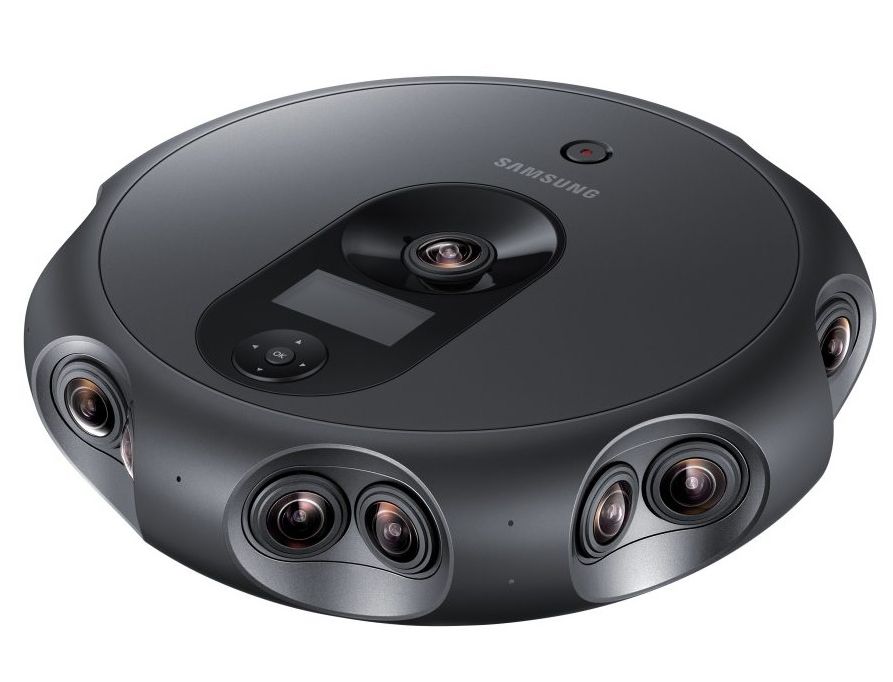 October 18, 2017 – Samsung Electronics Co., Ltd. has today announced the 360 Round, a new camera for developing and streaming 3D content for virtual reality (VR). Announced at the Samsung Developer Conference (SDC 2017), the Samsung 360 Round uses 17 lenses – eight stereo pairs positioned horizontally and one single lens positioned vertically – to livestream 4K 3D video and spatial audio.
October 18, 2017 – Samsung Electronics Co., Ltd. has today announced the 360 Round, a new camera for developing and streaming 3D content for virtual reality (VR). Announced at the Samsung Developer Conference (SDC 2017), the Samsung 360 Round uses 17 lenses – eight stereo pairs positioned horizontally and one single lens positioned vertically – to livestream 4K 3D video and spatial audio.
The 360 Round’s design features IP65 water and dust resistance, as well as a fanless design to reduce weight and eliminate background noise. The camera also includes PC software for controlling and stitching, as well as expandable external storage. The 360 Round also offers live streaming with one-step stitching and control software provided by Samsung.
“We have developed a product that contains innovative VR features, allowing video producers and broadcast professionals to easily produce high quality 3D content,” said Suk-Jea Hahn, Executive Vice President of Samsung Electronics’ Global Mobile B2B Team. “The combination of livestreaming capabilities, IP65 water and dust resistance and 17 lenses makes this camera ideal for a broad range of use cases our customers want – from livestreaming major events to filming at training facilities across various industries.”
The Samsung 360 Round uses a uni-body chassis designed to reduce heat, removing the need for a cooling fan and minimizing size and weight. Samsung claims that the design will help to eliminate excess noise and reduce power consumption, to allow for hours of continuous shooting.
The Samsung 360 Round will be available in October in the United States before expanding to other markets over time.
Visit the Auganix HUD for more information on Samsung.
Image credit: Samsung
About the author
Sam is the Founder and Managing Editor of Auganix, where he has spent years immersed in the XR ecosystem, tracking its evolution from early prototypes to the technologies shaping the future of human experience. While primarily covering the latest AR and VR news, his interests extend to the wider world of human augmentation, from AI and robotics to haptics, wearables, and brain–computer interfaces.
